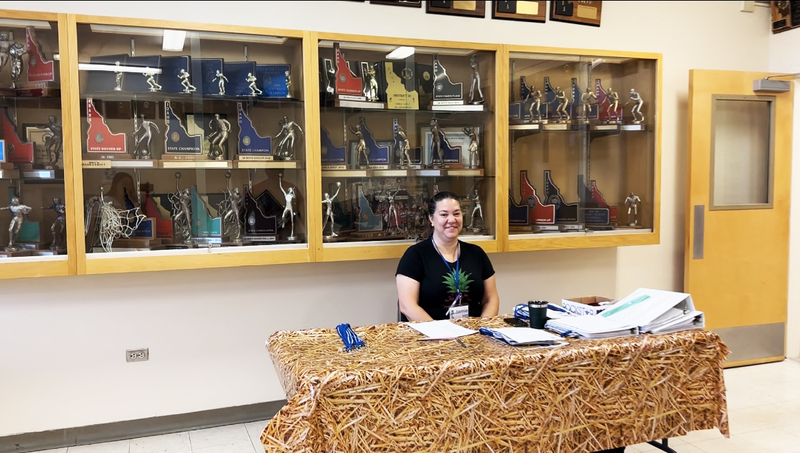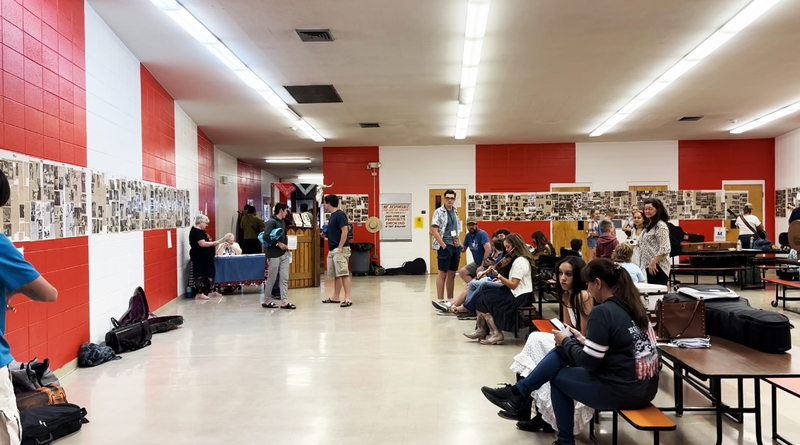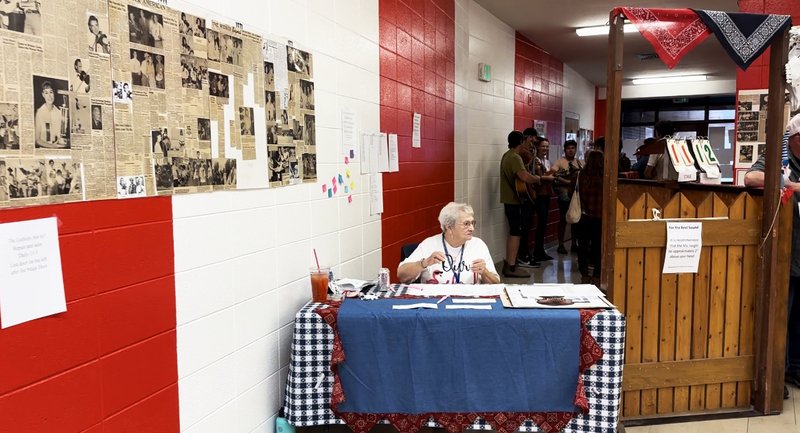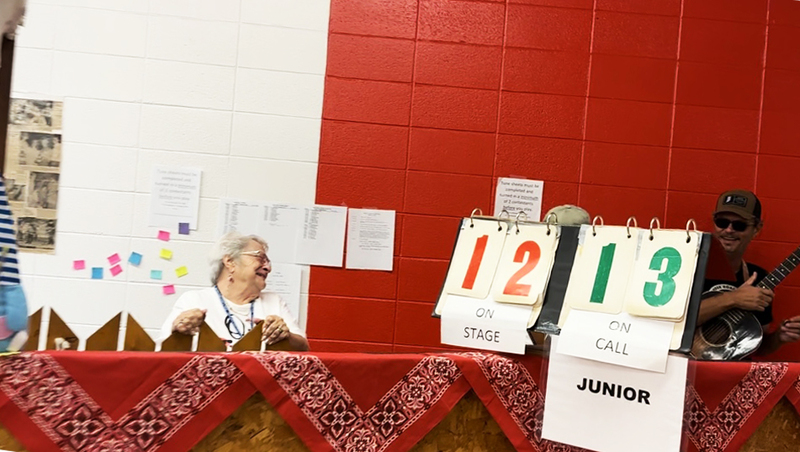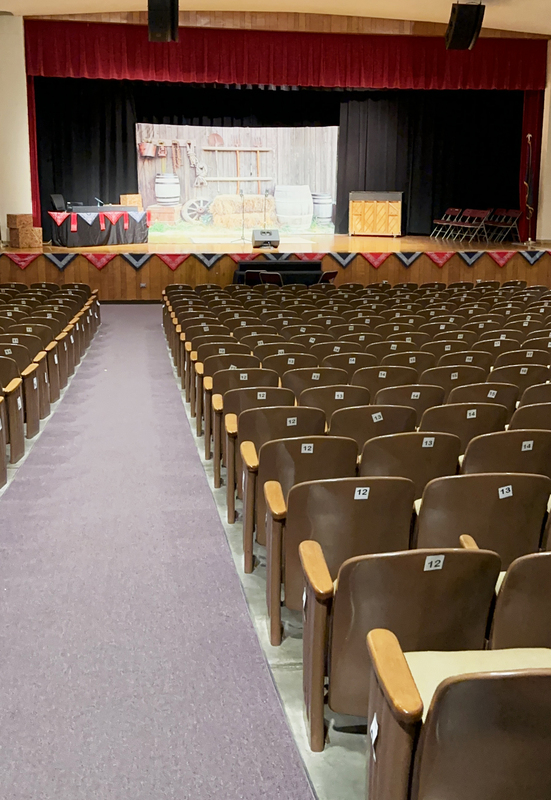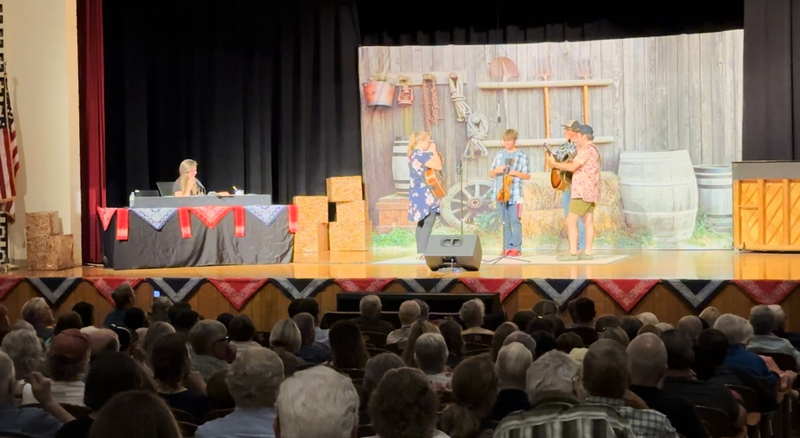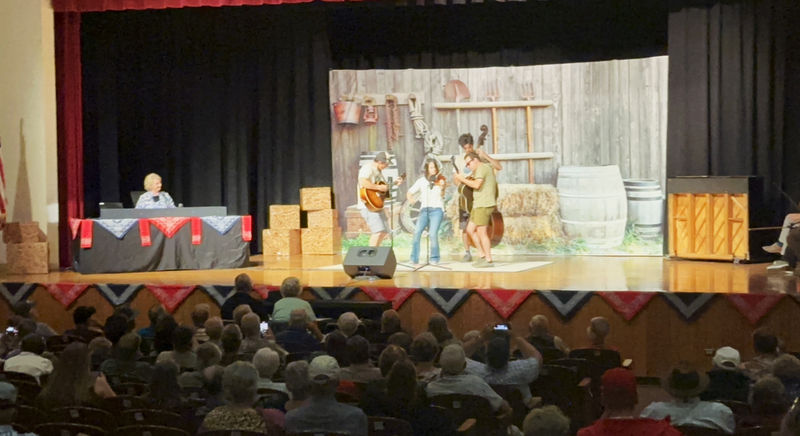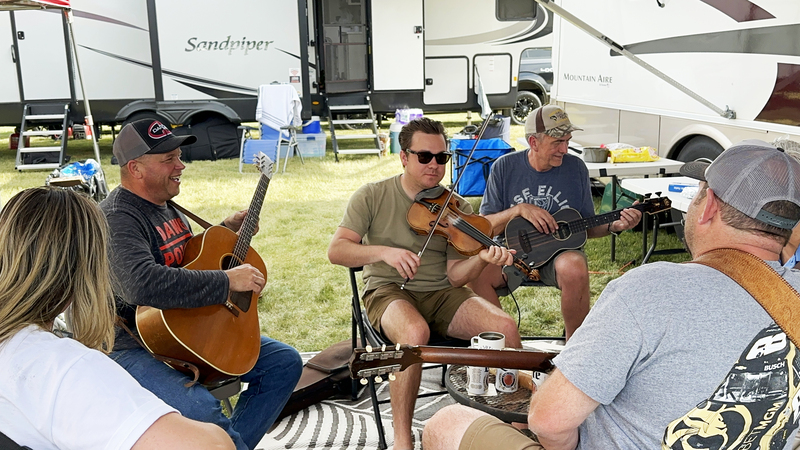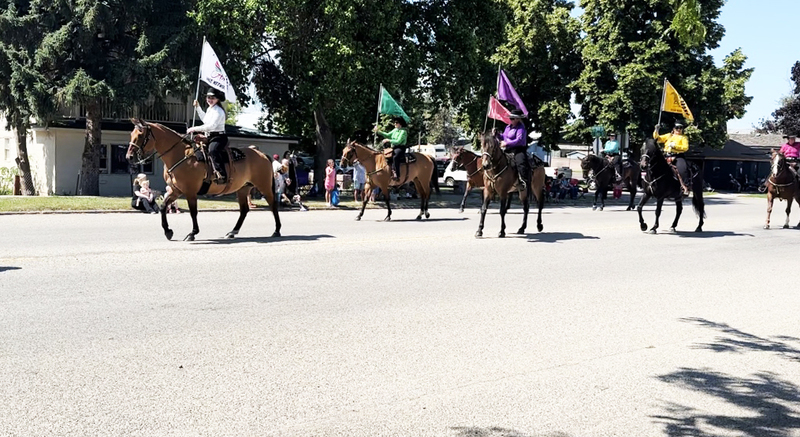National Oldtime Fiddlers' Collection
Recordings, photographs, and memorabilia from the contest and festival.
Contents: About the Collection | National Oldtime Fiddlers' Contest and Festival | Tech
About the Collection
This digital collection features recordings and memorabilia from the National Oldtime Fiddlers’ Contest and Festival held annually since 1953 in Weiser, Idaho. The items were curated by University of Idaho student Daniel Olortegui Vargas in 2023 as a project supported by the Gary E. and Carolyn J. Strong Special Collections Fellowship. Most of the materials come from the Lyle J. Reed collection, 1964-1987 held in Special Collections and Archives, with additional photographs taken by Olortegui Vargas in 2023.
A special note of thanks to Jamie Hill, University of Idaho alumna and staff member, who worked with Olortegui Vargas to add important context to this collection.
National Oldtime Fiddlers’ Contest and Festival
by Daniel Olortegui Vargas (Gary E. and Carolyn J. Strong Special Collections Fellow, 2023)
The violin is a well-known instrument. However, the fiddle is less well known. The names are synonymous; a fiddle is a violin, a bowed string musical instrument. The style of music largely determines when the word fiddle or violin is used. The fiddle is steeped in many popular traditions. One of the most renowned and influential fiddle traditions is held annually in Weiser, Idaho. This city is located in the rural western part of Idaho, and it sits at the confluence of the river that bears the same name and the great Snake River. In 2023, the population is a little over 5,000 inhabitants. Weiser was established in 1863 by the Logan family, which operated a way station for covered wagons at the rivers’ confluence. Many emigrants stopped in Weiser for rest after a long journey. Fiddles surely emerged from some of those covered wagons. For more than a century and half, fiddles have been heard in Weiser. In fact, there are reports of fiddle contests in the town as far back as 1914.
The architect of Weiser’s Oldtime Fiddlers’ Contest and Festival was Blaine Stubblefield. He was the Idaho Chamber of Commerce Secretary from 1948 until his death in 1960. Stubblefield was a graduate of University of Idaho, a WWI veteran pilot, and a champion of local history. He tirelessly encouraged officials in Weiser to allocate $175 for a fiddle contest. Then in 1953, Stubblefield proposed the idea of holding the contest during the Fifth Annual Weiser Square Dance Festival. Thus the Oldtime Fiddlers’ Contest was born on April 18, 1953, though at the time it was called the Northwest Mountain Fiddler’s Contest. Two people took that first-year prize money, and Dad Roberts won the first National Grand Champion. The event was a complete success.
In 1956, the contest name was changed to Northwest Oldtime Fiddling Championship before finally becoming the National Oldtime Fiddlers’ Contest in 1963. Through the years, a number of divisions and categories have been used to separate contestants. The contest has been held at Weiser High School for many years. Seemingly the whole town goes fiddle wild every year during the third week of June. Fiddlers and other musicians from about every state in the U.S. and even some from abroad attend the event. Inside the high school, musicians in cowboy boots and straw hats practice and compete. The school is crowded and buzzing with energy, filled with sounds of dozens of musicians playing and practicing simultaneously. Outside the quiet room where the actual competition is held is a strange jumble of notes with a strident Western flavor.
Once the patrons and contestants enter the event venue, contest registration is the first station. In 2023, the person in charge of this station was Jamie Hill, who grew up in Weiser and makes time each year to return home for the festival. This station is critical since the contestants check in if they registered online before the contest or register if they still need it. In this place, the person in charge gives the contestants a name tag to give them access to all events. Inside, the contestants gather in the high school cafeteria, known as the practice room. This place is where the magic begins. At the same time, fiddlers practice their presentations that they will later play in front of the public and judges. This room has a great history behind it. It has witnessed the beginnings of many legends who have attended the event since they were little. Many fell in love with the fiddle in this room, watching the contestants practice or having one of the contestants give them their first fiddle lesson. All of that took place in this place.
We leave to the imagination how the contestants listen to themselves because, in this room, everyone plays simultaneously. However, in some almost mystical way, the fiddlers listen to each other and bring out magical melodies that captivate the audience. The contestants practice in this room but also look forward to being called to present their three songs. Frank and Julie Eisenhauer oversee this phase. Each participant has a number; Frank and Julie are in charge of ensuring that the fiddler goes on stage and that the one that follows gets ready so that everything flows as quickly and orderly as possible. It is important to mention that the Eisenhauer’s has been linked to this contest for 56 years.
After going through Jamie Hill and the Eisenhauer, the contestants show what they are made of. They show the result of months and even years of preparation for the public to enjoy and to achieve the best score among the judges. The fiddlers enter the stage and play their three tunes. One of the tunes must be a hoedown, one must be a waltz, and the other is a “tune of choice” (something different than a waltz or hoedown). A strict time limit depends on the division and the round number. Contestants are classified into different age groups, and judging is based on danceability, old-time style, rhythm, and tone. If contestants win the first round, they move on to the subsequent rounds or playoffs. Contestants at Weiser are divided into seven age divisions and an open division. The Grand Champion Division is open to all ages, and the final five play five rounds and fifteen tunes unless a tie results in the final round.
Before a division competition starts, the judges play to show why they are judges. In 2023 there were four judges, John Francis, Danita Rast, Luke Bulla, and Mia Orosco-Kelso. The requirement to be a judge in this competition is to have won the National Grand Champion. However, it was not always like this; for example, in 1985, there were seven judges, of which only two were Grand National Champions, Tony Ludiker and Mark O’Connor. The same thing happened in 1984; of the six judges, only two were Grand Champions, Dick Barrett and Herman Johnson.
As the contestants play, the judges carefully listen to each performance to issue the deserved score. To give scores free of bias, the judges assemble in a room that is separate from the performance stage. Judges hear each performance through speakers and organizers shield the identity of each musician. The judges use computers to record their scores for each contestant. After the judges issue the scores, someone from the staff who is sitting next to the judges takes a piece of paper and writes the number of the contestant, the round, the date, the division, the score of the three tunes, and the name of the judge who gave that score. Once this paper is done, it goes to the office next door.
In this office, there are always two people. The first person with the first adding machine tabulates all the paper score sheets. Then a second person checks that all the numbers are correct. After all this process, other staff come and take the papers, double check the documents with the computer to see if the numbers are the same. Only a select few volunteers see the scores from each round of the contest, and artists do no find out their scores until the contest if over. The only publicly released information after each is a list of the contestants that will be moving on to the next round. Those names are randomized so it is impossible to know their ranking. The care that so many people have for this event is evident at every step.
Fun is not only found in the official contest space. Outside the high school is the campground, which fills up with RVs and tents throughout the week of the festival. If someone wants to enjoy this festival fully, they must stay in the high school campground. There you will hear fiddling from dawn to dusk. It is a truly wonderful experience.
Technical Credits - CollectionBuilder
This digital collection is built with CollectionBuilder, an open source framework for creating digital collection and exhibit websites that is developed by faculty librarians at the University of Idaho Library following the Lib-Static methodology.
Using the CollectionBuilder-CSV template and the static website generator Jekyll, this project creates an engaging interface to explore driven by metadata.

